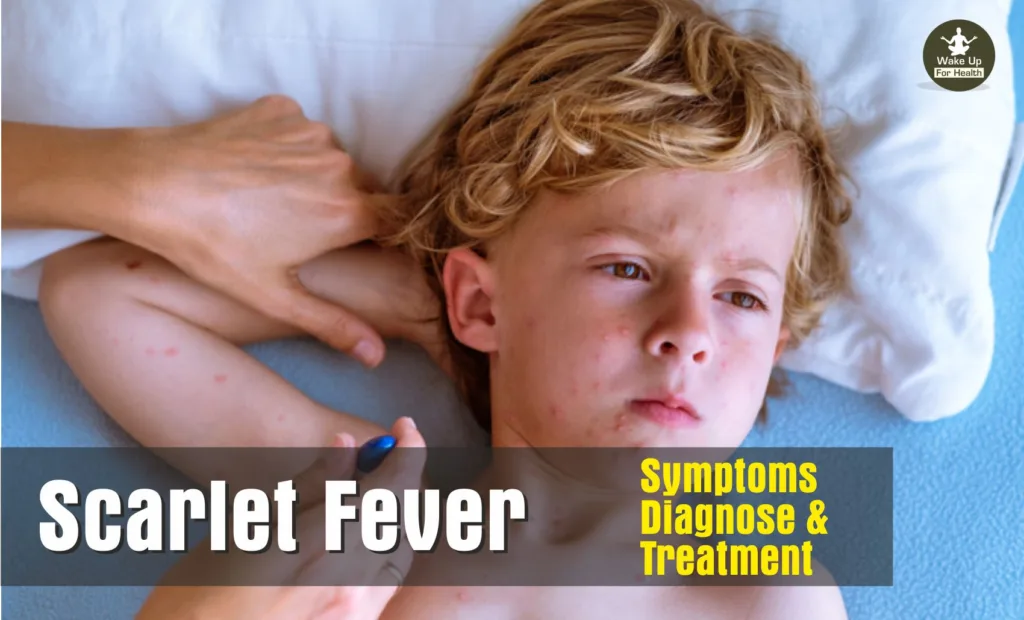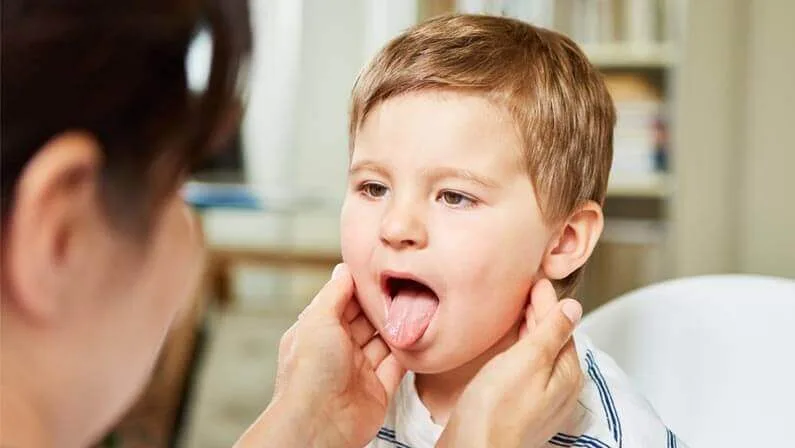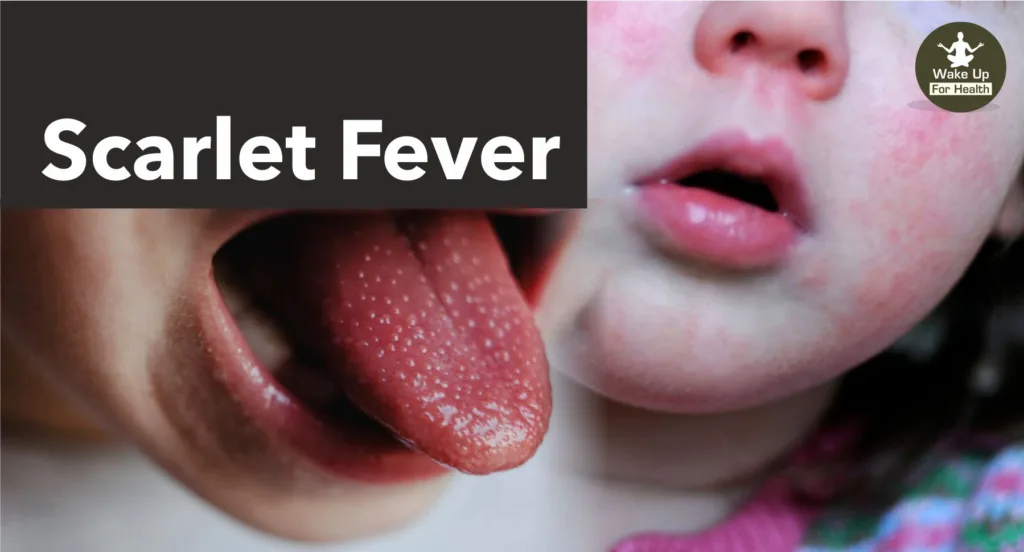Scarlet fever is also called Scarlatina. It is an infection that spreads from one person to another. There are red, raised rashes all over the body as a result of this illness. Initially it looks like a sunburn. These rashes first spread on the face, then on the throat and then on the whole body. If a child has a sore throat, he may have scarlet fever. Because the bacteria that spread scarlet fever also cause sore throat. Below we will know more about what is scarlet fever, scarlet fever symptoms, its causes, diagnose and treatment.

There is very high fever in this disease. This fever mostly occurs in children between 5 to 15 years of age. It is considered a serious disease occurring in children. If it is not treated on time, it can have serious consequences. Streptococcus pyogenes is the bacterium that causes scarlet fever. This disease can be treated with antibiotics.
What is Scarlet Fever?, Symptoms, Causes, Diagnostic Process, Treatment Approaches
• Red Rash- Seeing these red rash, it seems that Sunburn has happened. It usually starts in the mouth and then spreads through the neck to the chest, arms, abdomen and legs. If you itch these pimples, they turn yellow.
• Red Lines- Red lines occur in places like waist, elbow, knee, armpit, and neck. Gradually these lines become deeper.
• Swollen Face- Due to this disease, there are yellow colored circles on the face. Due to this the face appears swollen.
• Strawberry Tongue- Due to this disease, the tongue feels red and raised. Along with this, a white layer also gets on the chive. These are some of the initial symptoms of this disease.
• Redness and rashes on the face and tongue persist for about a week. When this redness subsides, the body feels parched, where a burning sensation may also occur.
Do you know about Zika Virus Diseases & Treatment
Scarlet Fever – Other symptoms
• 101 fever can occur due to this disease.
• Sudden feeling of cold.
• Red, white and yellow patches may appear in the throat.
• There will be difficulty in swallowing food.
• There will be vomiting.
• Headache will remain.
Scarlet Fever – Causes
The cause of scarlet fever is a bacteria called Streptococcus. The same bacteria can also cause oral infection in the throat and mouth. These bacteria create toxic elements in the body. Due to which red rashes occur in the body.
How Spread Scarlet Fever – Does this Fever Spread from One Person to Another?

• Yes, scarlet fever is a contagious disease. The person who has this disease, if another person comes in contact with him, then it also happens to him. Usually this disease infects another person in two to five days. Scarlet fever is spread through sneezing, saliva or phlegm.
• Scarlet fever can also happen if you drink water or eat something from a sick person’s false glass.
• This disease does not spread by touch, but it can spread by skin to skin contact.
• You can get it even if you share towels or clothes with a person with scarlet fever.
• Sometimes after having scarlet fever you do not have symptoms. In such a situation, it becomes difficult to detect the disease at the earliest.
A Tree Who Save Us More Then 300 Diseases.
Scarlet Fever – When it become a Serious Disease?
Some symptoms of scarlet fever appear in the beginning. If it is not treated in time, then it becomes a serious disease and starts affecting other parts of the body. Kidney disease, ear infection, pneumonia and arthritis can occur if not treated at the right time. The organs which are affected by scarlet fever are:
• Tonsils
• Lungs
• Skin
• Kidney
• Blood
• Ear
• Heart
• Joint
Scarlet Fever : How to Diagnose?

• As told earlier that this disease mostly occurs in children. There are child specialist doctors for children and they treat them.
• The doctor does a complete physical examination of the child.
• To detect the symptoms, the doctor first examines the child’s tongue, throat and tonsils.
• The doctor will see the rashes on the body. Along with this, we will also try to find out whether any lump has formed in the body.
• If the doctor suspects that the child has scarlet fever, he may take a sample of cells from the child’s throat for testing.
• In the lab, this sample will be examined.
Treatment for Scarlet Fever
Scarlet fever is usually treated in the same way as a sore throat. The youngster could receive antibiotics from the doctor. The child should not be sent to school while the child is being treated. Apart from this, the doctor can also suggest some other treatment.
• Gargling with warm and salty water to relieve throat pain and swelling.
• Acetaminophen (Tylenol) or ibuprofen (Advil, Motrin) can be given to reduce pain or fever. But these medicines are for elders.
• The doctor may ask the child to drink more and more liquids. This will give relief to the child’s throat and will also prevent dehydration.
• If there is moisture in the air of the house, it can help in curing the baby’s throat.
• If your child is 4 years old then you can mix it in soup or any drink.
• If there is itching on the rashes lying on the child’s body, then the doctor gives anti-itching medicine. Keep baby’s nails trimmed so that they do not damage their skin.
How to Avoid Scarlet Fever?
Scarlet fever cannot presently be prevented with a vaccination. The best course of action in this situation is to prevent infections. If someone has scarlet fever in the house, then take special care of cleanliness. Because this disease spreads rapidly. Teach your kids these things:
Washing hands- Teach your child to wash hands with soap for 20 seconds. Use an alcohol-based sanitizer in the absence of soap or water.
• Wash hands after using the washroom.
• Whenever there is a cough or sneeze, make a habit of washing hands even after that.
• Keep a handkerchief on the mouth in case of cold or cough.
• Keep children away from dusty places and pollution.
• You too should not smoke.
• Do not share food or utensils – To prevent infection, forbid your children to share their food or utensils with anyone.
• Cover the mouth and nose – In case of cough and sneeze, ask your children to cover the mouth and nose so that germs do not spread.
(Disclaimer : The purpose of this health-related article is to wake you up and aware of your health and to provide health-related information. Your doctor has a better understanding of your health and there is no substitute for their advice.)